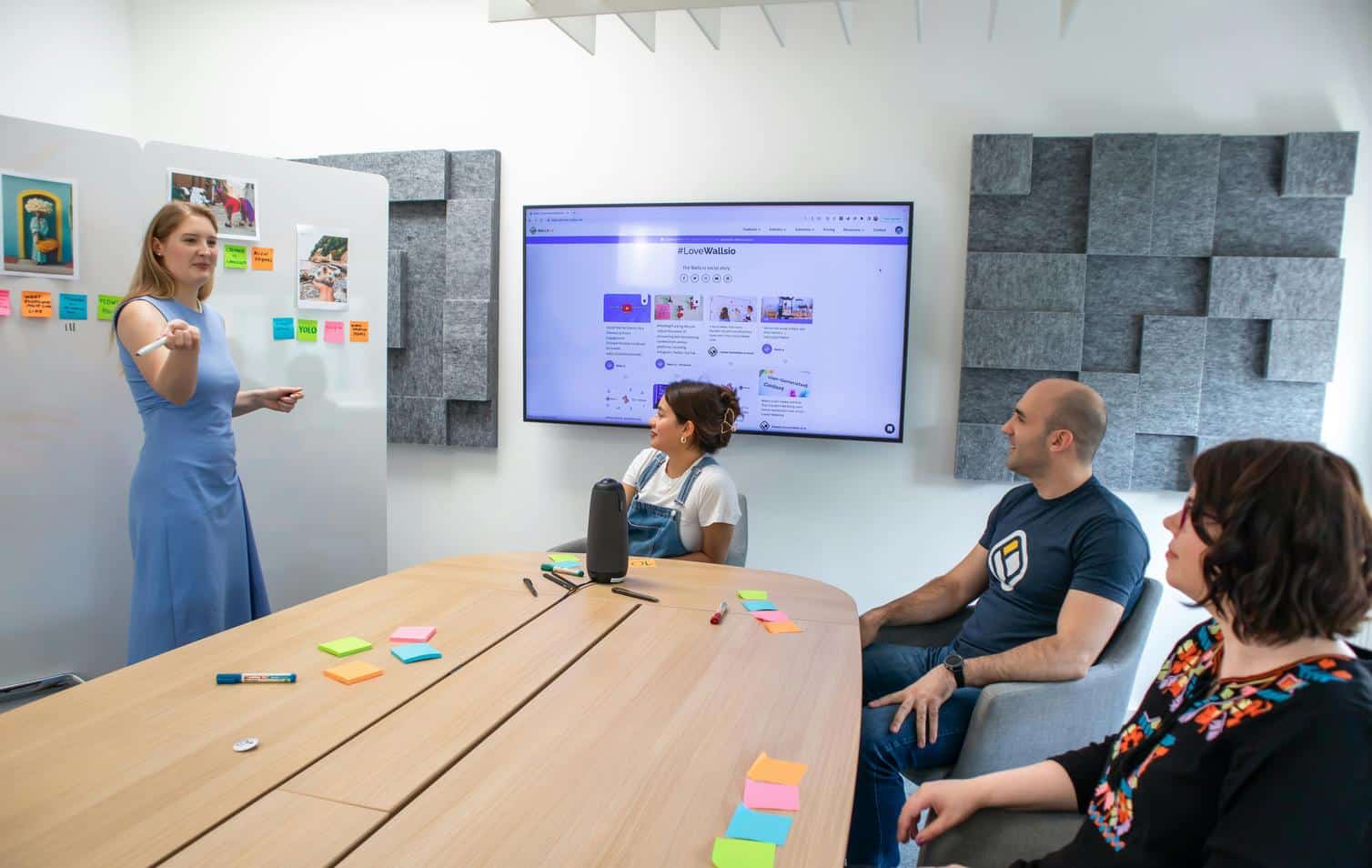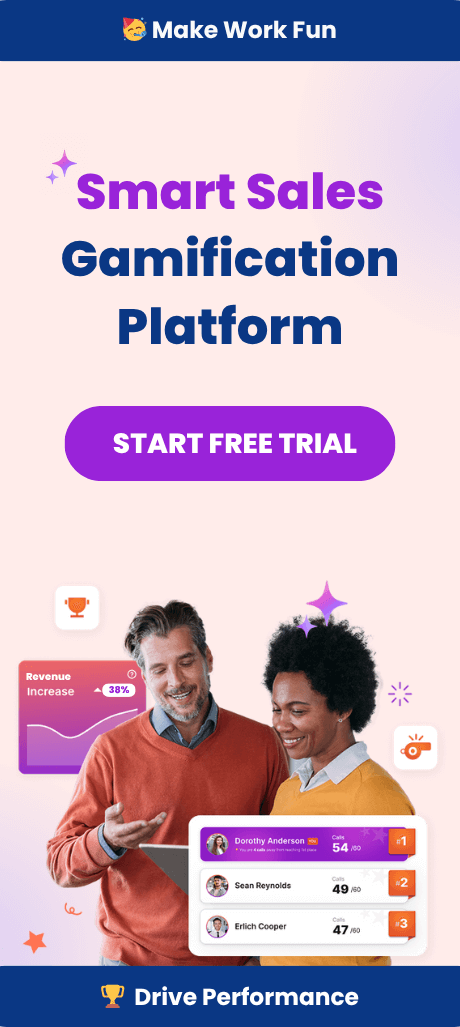Leaderboards have soared beyond their old status as simple sales charts tacked up in break rooms. Today’s digital leaderboards tap into the science of motivation, using the principles of gamification and engagement software to boost productivity and foster a more connected, high-performing environment. But to turn the leaderboard from a static scoreboard to a living driver of performance, executives need to rethink what leaderboard success really means.
The Strategic “Why” Behind Leaderboards
At their core, leaderboards satisfy the human need for recognition, comparison, and accomplishment. Yet, many legacy approaches have focused narrowly on displaying results rather than shaping desired behaviors. As workplaces and sales teams evolve in a digital-first world, the question is not whether to use leaderboards, but how to design them for greater impact.
Digital leaderboards offer a real-time, transparent view of progress, often visible to every team member from any device. But their influence reaches further: driving healthy competition, encouraging social recognition, and shining a light on progress toward company goals. Why does this matter? Because visibility and gamification are proven to reinforce motivation, especially when blended thoughtfully with positive feedback and attainable milestones.
Impact on Employee Engagement

The connection between leaderboards and employee engagement is no accident. Engaged employees are more likely to contribute at higher levels, adopt new technologies, and stay committed to organizational objectives. According to recent research on the link between engagement and performance, visible recognition like leaderboards can be a catalyst for ongoing motivation. However, the effect is only positive if these systems are perceived as fair, transparent, and supportive of growth. This means thoughtful rules, regular updates, and space for recognizing incremental wins—rather than only highlighting the very top performer.
Evolution from Physical to Digital Leaderboards
Physical leaderboards once symbolized status and competition on the sales floor, but they came with limits: slow updates, manual management, and a lack of granular data. Modern digital leaderboards, often integrated into the best gamification platforms, provide up-to-the-moment data. They showcase not just closed deals, but also progress, activity metrics, and even customer feedback. With these new capabilities, organizations benefit from:
- Transparent tracking that can highlight team and individual contributions in real time
- The ability to segment results by products, time period, or activity type
- Customization to align with evolving business priorities and KPIs
The shift marks a transformation from symbolic recognition to actionable insight.
Customizability and Flexibility for Changing Needs
No two sales teams—or companies—operate alike. Customizable leaderboards allow organizations to reflect unique success drivers and create incentives for a wide range of roles. One team might reward incremental effort and learning, while another might spotlight deal closure frequency. The best gamification software and leaderboard applications let managers tailor performance views and recognition rules to match current campaigns or organizational shifts.
This adaptability drives relevance, keeping engagement high as business goals evolve. Frequent updates to leaderboard metrics can spark renewed effort and help avoid the complacency or demotivation sometimes seen in static systems. Leaders should ensure every change ties back to broader strategy and is communicated with context.
Integrating Gamification for Deeper Engagement

Gamification provides the psychological underpinning that makes leaderboards effective—so long as participation is voluntary and rewards are meaningful. Gamification platforms layer in:
- Badges and milestone celebrations
- Real-time notifications of achievements
- Tiered goals, making progress attainable for all contributors
This multifaceted recognition has a direct line to higher morale and productivity, transforming performance management into an uplifting, team-centered pursuit.
For a deeper dive into these methods, explore the strategic role of gamification in modern sales.
Beyond the Numbers: Leaderboard Psychology
Recognition lies at the heart of great leaderboards. The best digital leaderboards take into account not just competition, but also community and personal progress. Segmenting leaderboards by different metrics encourages improvement at all skill levels. Spotlighting “most improved,” “best collaborator,” or “customer champion” ignites friendly rivalry while also fostering a growth mindset.
Such design ensures high performers are recognized, but so too are those making meaningful strides from their individual starting points. This dual focus propels overall engagement and avoids discouraging those further from the top spot.
Leaderboards as Change Agents
Effective leaderboards go far beyond surface-level metrics, serving as instruments of culture change. They signal which behaviors are celebrated, incentivize peer learning, and make achievement visible at scale. For sales organizations facing transformation—be it digital adoption, expansion, or a shift in business model—well-designed leaderboards can act as a north star for new priorities. As employee goals shift, digital displays of progress reinforce a shared sense of direction.
To avoid negative effects such as unhealthy competition or burnout, it’s essential to anchor leaderboards in positive values, transparent rules, and regular feedback. For best practices, see this guide to leaderboards done right.
Fairness, Transparency, and Buy-In
Even the most advanced leaderboard fails if team members perceive it as unfair, inaccurate, or manipulative. The keys to trust include:
- Clear, consistent measurement rules available to everyone
- Regular recalibration based on feedback and new goals
- Visibility into how metrics connect to larger company objectives
When transparency is paired with regular recognition and communication, leaderboards encourage participation rather than resentment. Communicating rationale and listening to team concerns is non-negotiable for ongoing engagement.
Integrations: The Power of Real-Time Data

Leaderboards are most valuable when seamlessly integrated with sales management software. Synchronization with CRMs or employee engagement platforms means real-time updates, fewer manual tasks, and increased trust in what’s displayed. This reduces administrative friction, improves data accuracy, and keeps the focus on coaching and development.
For example, by automating data funnels from your CRM to your digital leaderboard, you create an ecosystem where feedback, goals, and recognition all coalesce. Such integrations are increasingly a non-negotiable expectation for modern sales teams.
Leaderboards for Remote and Hybrid Teams
Remote and hybrid work have forced companies to rethink what visibility and recognition look like. Leaderboards bridge physical distances, providing everyone with the same real-time window into progress and celebrations. This reduces the risk of remote workers feeling “out of sight, out of mind,” fostering inclusion and a sense of belonging even in distributed environments.
Remote-first leaderboards should allow contributions to be recognized publicly and regularly, regardless of geography. Features such as dashboards, digital celebrations, and instant messaging integrations can deepen engagement, drive friendly competition, and reinforce culture across borders.
Metrics That Matter: Choosing What to Measure
For a leaderboard to become a catalyst for real change, the metrics tracked need to closely reflect business strategy. Too often, organizations limit themselves to raw revenue or call numbers. Over time, this narrows the definition of success and limits broader performance. Instead, aim for a diversified set of KPIs. These can include:
- Customer satisfaction ratings
- Collaboration milestones
- Effort-based KPIs like training participation or new skill acquisition
This holistic approach ensures broader buy-in and provides opportunities for every team member to shine.
Leaderboards and Employee Retention
Retention strategies increasingly rely on recognition and growth opportunities. Leaderboards that go beyond pure competition and instead showcase personal development, team achievements, and skill progression can boost morale and reduce turnover. Engaged employees feel a deeper sense of purpose and are more likely to stay with their organization—benefits that translate to healthier bottom lines and enhanced company culture.
Organizations looking to double down on employee engagement should explore options for gamification and employee recognition built into their leaderboard strategy. To see where retention fits into overall engagement, review this analysis of recognition and productivity.
Technological Evolution: What’s Next for Leaderboards?
As organizations grow more sophisticated in their use of gamification and analytics, leaderboards will continue to evolve. AI-powered dashboards now offer predictive insights, custom challenge creation, and automatic adjustment of goals based on team trends and market realities. Executives should stay alert to advances in leaderboard technology, evaluating:
- Customization of recognition styles to individual and team preferences
- Integration with learning platforms to reward upskilling efforts
- Dynamic, multi-layered leaderboards for global, hybrid, or cross-functional teams
The best platforms will remain highly flexible and data-driven, allowing leaders to fine-tune strategy quickly and at scale.
Choosing the Right Solution
Selecting the right digital leaderboard solution involves considering integration with existing platforms, adaptability to shifting goals, and support for both individual and collective recognition. Executives should seek tools with proven track records in employee engagement and sales performance management. Modern platforms also offer advanced analytics, easy customizations, and mobile access.
For organizations ready to implement or upgrade, exploring a trial platform can offer critical insights into customization and user experience. Start a trial or book a demo with Spinify to experience real-world leaderboard innovation.
Culture, Competition, and Recognition: The Lasting Impact
Modern leaderboards, underpinned by the science of gamification, are less about creating internal rivalry and more about celebrating steady progress and collective wins. As teams and organizations shift toward more holistic definitions of performance, the future of leaderboards is bright—provided they remain adaptable, fair, and centered on true engagement.
For executives and RevOps leaders, now is the time to assess: Are your leaderboards shaping the culture you want, or simply recycling old habits in a digital costume? The answer will determine whether your leaderboard is a lasting driver of engagement and results—or just another display on the wall.



